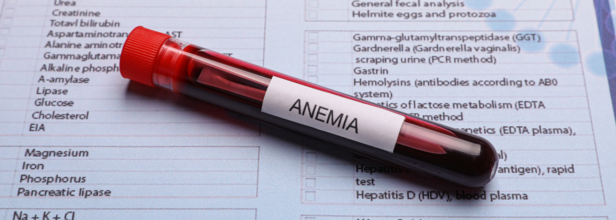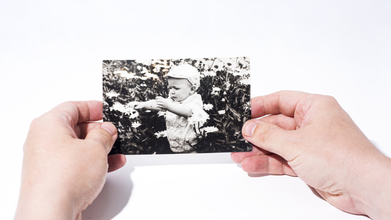- Health Conditions A-Z
- Health & Wellness
- Nutrition
- Fitness
- Health News
- Ayurveda
- Videos
- Medicine A-Z
- Parenting
South Asia Continues To Remain The 'Global Epicentre' Of Anemia Among Girls

Credits: Canva
South Asia has emerged as the global epicentre of anemia among adolescent girls and women, with more than 259 million currently affected, according to a joint warning issued by the United Nations agencies and the South Asian Association for Regional Cooperation (SAARC).
The condition, often overlooked, is not only a health concern—it’s a signal of deeper systemic failures across health, nutrition, and education sectors.
The Hidden Toll of Anemia
Anemia impairs the body's ability to carry oxygen, leading to chronic fatigue, weakened immunity, and in severe cases, complications during pregnancy and childbirth. It also limits educational attainment and economic participation, reinforcing gender inequality and poverty.
The impact extends beyond individuals. An estimated 40% of the world’s low birth weight cases are linked to maternal anemia, contributing to poor childhood growth, delayed cognitive development, and lifelong disadvantages.
In economic terms, anemia costs South Asia a staggering $32.5 billion every year, draining resources and limiting regional development.
Anemia in Girls: A Preventable but Persisting Health Crisis
Despite its scale, anemia is both preventable and treatable. Public health experts emphasize that the tools already exist: regular iron and folic acid supplementation, diets rich in iron and essential vitamins, clean water and sanitation, deworming, and access to quality maternal health care.
However, to make meaningful progress, countries must take an integrated, multi-sectoral approach—linking health, nutrition, education, and social protection systems.
Countries And Their Strategies To Combat Anemia
Several countries in the region are already demonstrating how focused interventions can bring results.
Sri Lanka, where nearly one in five women of reproductive age is anemic, is expanding its national nutrition programmes, targeting high-burden districts with stronger maternal services.
India has begun integrating iron supplementation into school and antenatal care in high-prevalence states, aiming to reach adolescent girls and expectant mothers directly.
Pakistan is piloting community-based nutrition and reproductive health services, improving early detection and follow-up care in rural areas.
Bangladesh is leveraging school systems to deliver fortified meals and health education to adolescents, with ministries of health, education, and agriculture working in tandem.
Smaller nations like the Maldives and Bhutan are also stepping up, focusing on early prevention, public awareness, and food fortification. Both have invested in data-driven anemia monitoring and inter-ministerial collaboration.
Nepal, meanwhile, has shown what sustained, community-driven action can achieve. Since 2016, the country has reduced anemia among women of reproductive age by 7%, with particularly notable improvements in low-income regions. Much of this progress is credited to the efforts of female community health volunteers, who counsel families, connect them to services, and distribute nutrition support packages such as the Sutkeri Poshan Koseli—a food and cash support scheme for new mothers.
Also Read: Why Stopping Antidepressants Can Be Harder, Here's How Withdrawal Could Last Longer Than You Think
Understanding the Root Causes of This Preventable Condition
The new report emphasizes that ending anemia is not just a medical goal—it’s a developmental imperative. While governments must lead the charge with strong policies and investments, meaningful change also requires engagement from communities, schools, health workers, and families.
Integrated health systems, targeted data, and cross-sector action can help South Asia’s girls and women break the cycle of malnutrition and unlock their full potential. Ultimately, addressing anemia is about more than preventing disease—it's about building resilient communities, stronger economies, and a healthier future for all.
Childhood Dementia Diagnosis Of A Daughter 'Shattered' Her Father's Life, What Causes This?

Credits: iStock
We often hear of dementia as an adult, or older people's disease, but, a father from Glasgow shares how his four-year-old daughter was diagnosed with the condition. Childhood Dementia news of Darren Scott's daughter was delivered to him like a "complete thunderbolt", he tells Sky News. She was diagnosed with the condition before she turned four. Five doctors were waiting, when Sophia Scott, who had just turned four, were summoned to a Glasgow hospital room. Then came the worst news. Scott was told that his daughter could not live beyond the age of 16. "We were told... there was nothing they could do. It was a moment that broke us, shattered our lives. We have never recovered," he says.
What Is Childhood Dementia?
As per Dementia Australia, childhood dementia is a rare brain condition that affects one in every 2,900 babies globally. Childhood dementia is a group of serious brain conditions that interfere with a child’s memory, behavior, emotions and ability to communicate. It isn’t caused by lifestyle or ageing. Instead, it stems from more than 100 rare genetic disorders that children are born with. These include conditions such as Niemann-Pick type C, Batten disease and Sanfilippo syndrome.
No two children experience childhood dementia in the same way. The illness progresses differently for each child, but one thing remains constant: there is currently no cure. Like adult dementia, childhood dementia is progressive, meaning symptoms worsen over time. Heartbreakingly, around half of all affected children do not survive beyond the age of 10.
What causes childhood dementia?
Childhood dementia is genetic. Globally, about one in every 2,900 babies is born with a condition that can lead to childhood dementia. In Australia alone, an estimated 1,394 children were living with dementia in 2021.
The conditions that cause childhood dementia fall into several categories, including inborn errors of metabolism, lysosomal disorders, mitochondrial disorders, mucopolysaccharidoses, leukodystrophy, neurodegeneration with brain iron accumulation (NBIA), and peroxisomal diseases.
Signs and symptoms to look out for
Symptoms can begin in early childhood or appear much later, sometimes not showing up until the teenage years. The progression may be rapid or unfold slowly over several years, deeply affecting both the child and their family.
Much like adults with dementia, children may struggle with memory loss, confusion, changes in personality, anxiety or fear, and severe sleep disturbances. They may also find it difficult to concentrate, learn, communicate or understand things, and some experience behavioral challenges such as hyperactivity.
In addition, childhood dementia can affect the body beyond the brain. Children may develop problems with their bones or joints, experience issues with the heart, lungs or digestive system, lose their ability to move, see or hear, or have seizures.
As the condition advances, children gradually lose skills they once had — talking, walking, reading, writing and playing. Eventually, the body itself begins to shut down. Without major medical breakthroughs and more research, most children with childhood dementia will continue to face a shortened life, often not surviving beyond their teenage years.
India Faces A Looming Lung Cancer Crisis, Expert Warns

Credits: iStock
India is staring at a sharp rise in lung cancer cases over the next few years, with experts warning that the disease is no longer confined to smokers alone. A recent study published in the Indian Journal of Medical Research projects a significant increase in lung cancer incidence by 2030, with certain regions, particularly the North-East, expected to bear a disproportionate burden. Alarmingly, women are showing one of the fastest rises in new cases.
At a time when the country is on the brink of what researchers describe as a “tsunami” of lung cancer cases, doctors stress that public awareness, early detection, and breaking long-held myths are more important than ever.
Lung Cancer Is No Longer Just a Smoker’s Disease
Lung cancer has long been associated almost exclusively with smoking, but experts say that narrative is outdated. Speaking to The Times of India (TOI), Dr Arun Kumar Goel, Chairman – Surgical Oncology at Andromeda Cancer Hospital, Sonipat, explained that while smoking remains the biggest risk factor, non-smokers are increasingly being diagnosed with the disease.
“Air pollution, indoor cooking smoke, passive smoking, radon gas exposure, occupational hazards like asbestos, and even family history can contribute to lung cancer,” Dr Goel explined. He added that adenocarcinoma, a subtype of lung cancer, is particularly common among non-smokers and appears to be linked more to environmental and genetic factors than tobacco use.
Early Symptoms Are Easy to Miss
One of the biggest challenges with lung cancer is that its early symptoms are often vague and easily mistaken for common respiratory problems. Dr Goel told TOI that persistent cough, changes in cough pattern, coughing up blood or mucus, unexplained chest pain, breathlessness, fatigue, and sudden weight loss are warning signs that should not be ignored.
“In India, lung cancer symptoms often overlap with illnesses like tuberculosis, which leads to delays in diagnosis,” he said. As a result, many patients only seek medical help when the disease has already progressed to an advanced stage.
What a Diagnosis Changes Overnight
A lung cancer diagnosis can be life-altering, both physically and emotionally. According to Dr Goel, patients are suddenly faced with difficult treatment decisions, ranging from surgery and chemotherapy to radiation or targeted therapy. Physical symptoms such as breathlessness and exhaustion can significantly affect daily life.
Emotionally, patients may experience shock, anxiety, fear about the future, concerns for their families, and a loss of independence. “Support from medical teams, counselling services, and loved ones plays a crucial role during this period,” he said.
The Biggest Myth That Delays Care
The most damaging myth, experts say, is the belief that lung cancer only affects smokers. Dr Goel warned that this misconception often results in non-smokers dismissing symptoms or doctors delaying screening. “Anyone can develop lung cancer, regardless of smoking history,” he said.
Early Detection Can Save Lives
If there is one message the public should remember, Dr Goel said, it is that early detection can dramatically improve outcomes. Persistent cough lasting several weeks, unexplained breathing difficulties, or ongoing chest discomfort should prompt immediate medical attention.
“Recognizing symptoms early and seeking help can change the course of treatment and significantly improve quality of life,” he said.
Face Masks Are 'Inadequate', Says WHO, Must Be Swapped For Respirators

Credits: iStock
Face masks are not adequate when it comes to protection against flu-like illnesses, including COVID, said the World Health Organization (WHO) guidelines. As the number of flu cases rise in the US and the UK, this WHO guideline, may be of use. The guidelines noted that the surgical masks worn by doctors and nurses, when they are face to face with a patients are no longer providing the protection, and must be replaced with respirators.
The guidelines noted in a letter to the WHO chief Dr Tedros Adhanom Ghebreyesus, noted there is “no rational justification remaining for prioritizing or using” the surgical masks that are ubiquitous in hospitals and clinics globally, given their “inadequate protection against airborne pathogens”. “There is even less justification for allowing healthcare workers to wear no face covering at all,” the letter read.
When COVID was at its peak, an estimated of 129 billion disposable face masks were being used around the world every month. These were used by the healthcare workers as well as general public. These surgical masks were most widely available and recommended by most health authorities during that time. However, respirators were then designed to filter tiny particles. Then came the masks FFP2/3 standards in the UK or the N95 in the US. Evidence also supported that many countries are switching to these masks and that they are more effective. This resulted in fewer infections in patients and health professionals, as well as reducing the rate of sickness, and burnout of the healthcare professionals.
What Is The Key Difference Between Respirator and Surgical Mask?
Face masks are loose in fitting and are designed for one-way protection. It protects others from coughs and sneezes. WHO recommends a three-layer mask when people cannot socially distance. However, not all face masks have a safety rating.
The respirators on the other hand has a tight fitting, which creates a facial seal and filters both inflow and outflow of air. It tightly covers the nose and the mouth. It also removes 94% of all particles that are 0.3 microns in diameter or larger. It is also designed to protect the wear up to the safety rating of the mask.
COVID - Airborne or Not?
The WHO has faced criticism for its delayed acknowledgment of Covid-19’s airborne transmission. The letter urges the agency to reassess its earlier position and clearly communicate to the public that the virus spreads through airborne respiratory particles.
Professor Trisha Greenhalgh of the University of Oxford, a signatory to the letter whose research is widely cited in it, said that infection occurs only when germs enter the body. She explained that respirators, which seal tightly against the face, force air to pass through high-grade filters that block airborne pathogens. In contrast, she noted, medical masks fit loosely and allow significant air leakage.
Supporters of the letter include members of the World Health Network, leading US epidemiologist Eric Feigl-Ding, and Guardian columnist George Monbiot.
Responding to the letter, a WHO spokesperson said it would undergo “careful review.” The spokesperson added that the organization consults experts across diverse health and economic settings when developing guidance on personal protective equipment for healthcare workers, and that its Infection Prevention and Control guidelines for epidemic- and pandemic-prone respiratory infections are currently under review in light of the latest scientific evidence.
© 2024 Bennett, Coleman & Company Limited

